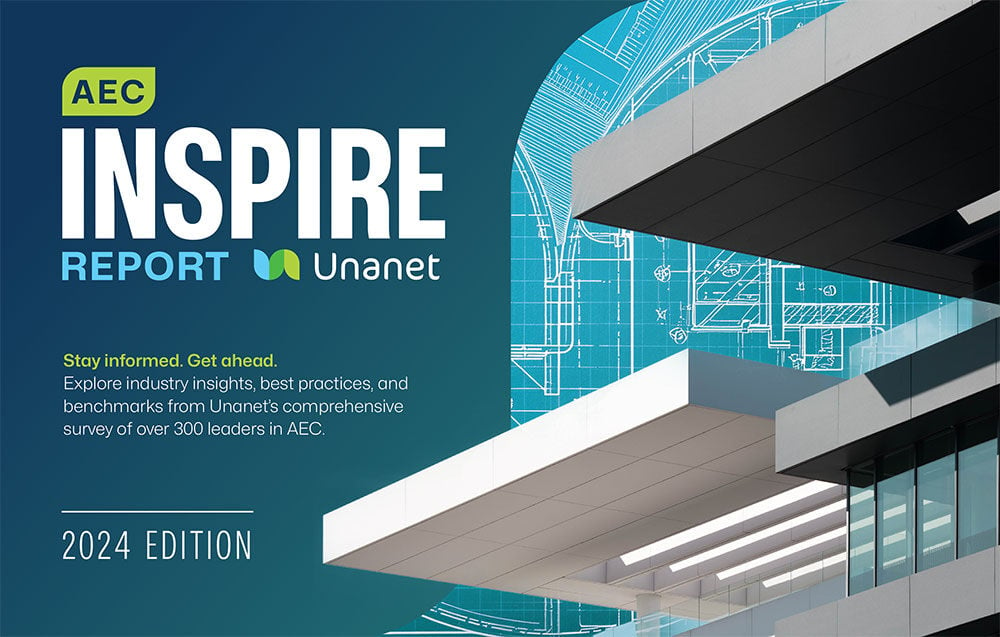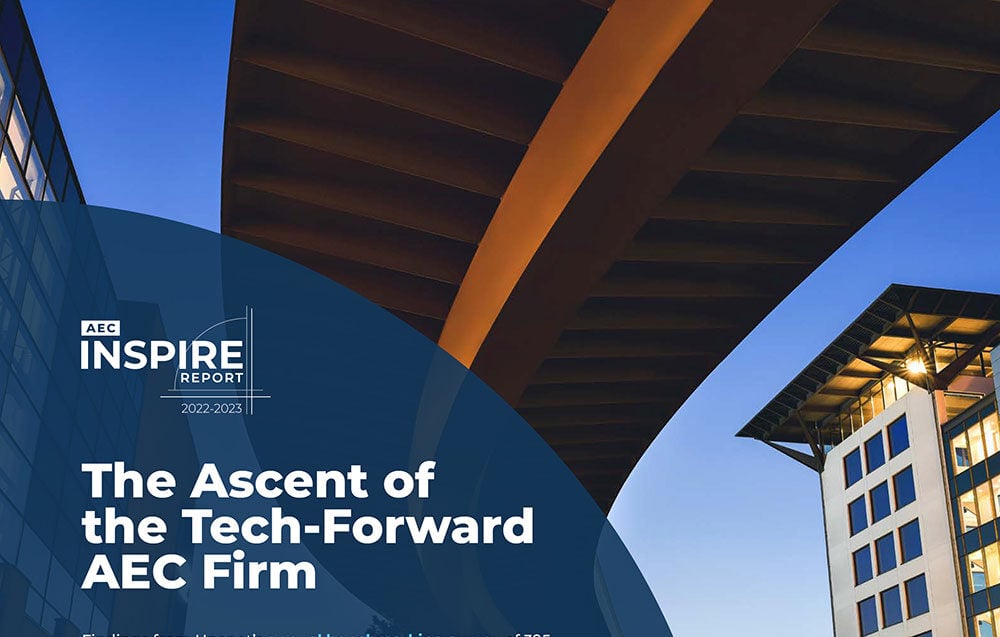Navigating the future of work in the AEC industry
The architecture, engineering, and construction (AEC) industry is at a crossroads. As firms struggle with talent shortages, shifting workforce demographics, and increasing competition, the need for strategic workforce planning has never been greater.
How are AEC leaders tackling these challenges?
This edition of Unanet’s annual AEC Inspire Report reveals key insights from over 300 industry professionals on the state of talent, resourcing, and business growth in 2025.
WHAT'S INSIDE?
-
The #1 business concern for AEC firms today – and how to solve it
-
Why 67% of firms struggle with hiring and retention – and the strategies successful firms are using
-
The real impact of technology adoption – and how firms are leveraging AI, CRM, and resource management tools to gain a competitive edge
-
Forecasting and financial insights – How firms are planning for future growth and improving project performance
WHO’S IN THE REPORT
By business size
Respondents represent an even spread across small and midsize businesses (SMBs) and large enterprises.
By industry
Almost 80% of respondents indicated their primary industry was either construction or engineering. Some multidisciplinary respondents indicated that their organization derived revenue from more than one industry (e.g., multidisciplinary).
AEC Inspire by the Numbers
YES
BUT
Maturity scale for resource management in architecture and engineering
The AEC Inspire Report also covers resource management and how top firms are approaching it. Check out the scale below to get a better understanding of how mature your firm’s resource management is. Click each card to see possible improvements.
1
Ad Hoc
Resource planning is unstructured and reactive, with no formal processes or tools in place.
Possible Improvements
Introduce basic project management tools and define standardized processes for resource allocation.
2
Basic
Basic resource planning is conducted but is mostly manual, relying on spreadsheets or informal methods.
Possible Improvements
Implement centralized resource planning software to improve visibility and reduce manual effort.
3
Defined
Formal processes exist, and tools are used to manage resource allocation and scheduling.
Possible Improvements
Enhance forecasting accuracy by integrating historical data and project management systems.
4
Data-driven
Resource planning is proactive, leveraging data for scheduling and tracking utilization rates.
Possible Improvements
Use advanced analytics and reporting to optimize resource allocation and align with strategic goals.
5
Continuous Improvement
Resource planning is fully integrated with business operations, supported by predictive analytics...
Possible Improvements
Focus on continuous improvement through machine learning and AI-driven insights for maximum efficiency.
If you’re having trouble determining where your firm fits on the scale, reading the AEC Inspire Report can help.
Compare Findings to Past Reports
Get the data. Gain the insights. Take action.
Download the 2025 AEC Inspire Report to see how leading firms are solving today’s workforce challenges – and preparing for tomorrow.






